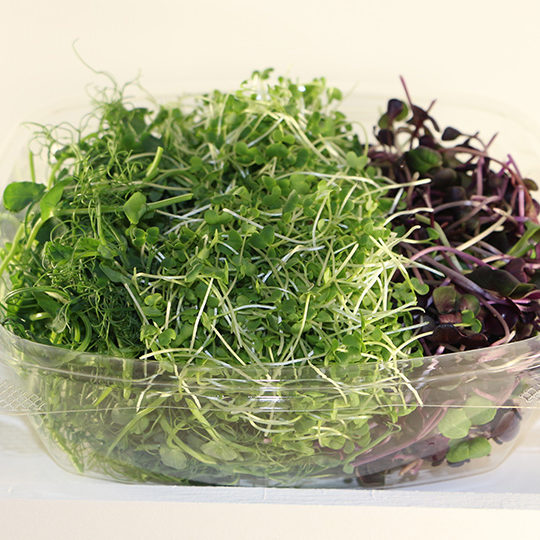Description
So far 400 have been sold in 2024
- Put your desired products together.
- Orders over 200 NZ free shipping + 10% Discount
- Fresh products are shipped in cooled boxes. Shelf life is 5-10 days
Our Blue Fire Nasturtium leaves (Edible Flower Leaves) are truly something special.
Facts and Knowledge
- Our microgreen team harvests fresh microgreens daily to ensure that the different harvest times of the other plants are strictly followed to ensure the highest quality. Environmentally friendly and reusable materials are used for packaging, No mould can appear for 8 – 14 days if stored correctly
- The weight information on our boxes is the actual usable plant weight.
- If you prefer microgreens in a plant tray, you must consider the following:
- Caution! Some types of plants tend to form mould in the root area. Be sure to store dry and ventilate the planting mat. The weight of the products offered in trays includes grow mats, water, roots and packaging this is why the usable plant weight is generally 40-50% below the declaration. For technical reasons, this applies to all suppliers of planters. Find out what Wikipedia has to say.
The #Microgreenteam only offers government-approved microgreens with eco-friendly and reusable packaging.
The leaves have a strong peppery bite, while the stems with a texture similar to chives are even stronger. Nasturtium leaves, both large and small, are completely edible. The young leaves are usually more tender than the larger ones, but that’s not always the case. The leaves have a generic green plant-like taste (like a lot of salad greens), with a sharp peppery bite that shows up several seconds later.
Use the leaves as salad greens whole or chopped. Since nasturtiums have that peppery bite, you may want to mix in other more mild greens. Their peppery flavour goes well with goat cheese and fresh and dried fruits. Can be used to replace spinach anywhere spinach is used. This includes things like lasagna, minestrone, creamed spinach, quiche, quinoa or veggie patties, and spinach artichoke dip.
Turn them into unique pesto and use them on pasta, or bread, or swirl them into some minestrone. You can also use half basil and half nasturtium leaves for a more classic flavour. Replace grape leaves with large nasturtium leaves as they get as big as grape leaves and can easily be used for things like Greek dolma. Use them as a Muffin tin liner for mini quiches. The leaves can also be used for infusions. The flavour will be similar to the flower infusions, and they don’t impart a green colour.
Nasturtium stems are crisp, yet tender. The stems can be used to replace chives in any recipe where you want to add nasturtium’s characteristic bite. These Basil microgreens are popular with chefs for their sweet and savoury profile. They complement heirloom tomatoes and are a great cocktail garnish.
Use the stems finely chopped as a garnish on baked potatoes, pasta, gratins, stir fry, garlic bread, salad, and nearly anything else. Add them to pesto, any recipe from a traditional basil pesto to a nasturtium-leaf pesto. Fold them into an omelette where the leaves and flowers can be added as well. A herbed omelette with halloumi and nasturtiums works well. Add them to any sandwich for a unique flavour (mix in with mustard or sprinkle on top of cheese).
For detailed recipe ideas please check out our Recipe Page Here or visit our YouTube channel Right Here.
Let’s dive into their nutritional values:
It is a plant with numerous healing properties. Medicinal plants such as the garden nasturtium contain trace elements and bioactive compounds which can be easily absorbed by the human body. The flowers and other parts of the garden nasturtium are a good source of microelements such as potassium, phosphorus, calcium and magnesium, and macro elements, especially zinc, copper and iron. The essential oil, the extract from the flowers and leaves, and the compounds isolated from these elements have antimicrobial, antifungal, hypotensive, expectorant and anticancer effects. The antioxidant activity of extracts from garden nasturtium is an effect of its high content of compounds such as anthocyanins, polyphenols and vitamin C. Due to its rich phytochemical content and unique elemental composition, the nasturtium may be used in the treatment of many diseases for example the illnesses of the respiratory and digestive systems.









Reviews
There are no reviews yet.